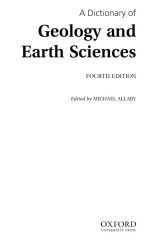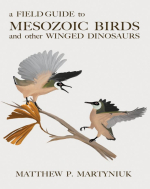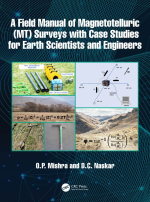In preparing this new edition of our Dictionary of Geology and Earth Sciences I have changed the emphasis very slightly by increasing the number of entries for terms that are directly geological. The new title reflects this minor revision. At the same time, however, I have found it necessary to add more entries describing satellite missions and planetary discoveries. I have also added a new Appendix, listing web addresses for all the satellite missions described in dictionary entries.
Inevitably, the dictionary has grown a little longer. That is the way of dictionaries. New terms emerge, but old ones take a long time to die and disappear from the vocabulary. As with the third edition, I have worked alone. I have scrutinized every entry and made many small changes where I thought I could improve the clarity of definitions. If, inadvertently, I have introduced any errors, or failed to spot and remove earlier errors, I have no one to blame but myself. If you find a mistake I will be grateful if you draw it to my attention. You can contact me through my website.
If you are meeting the dictionary for the first time, I hope you find it helpful.













